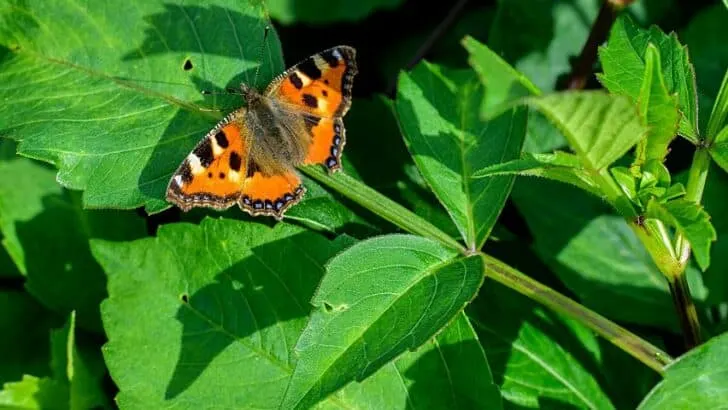Dahlias are plants that grow easily – until they don’t.
Fortunately, when dahlias are unhealthy, such as when dahlia leaves droop, the trouble is probably one of a particular set of issues, making diagnosing and fixing the problem much simpler.
In this article, I will show you how to identify the problem and describe effective solutions that will rapidly revive your dahlia plant when leaves are starting to droop.
Table of Contents
Dahlia Leaves Drooping
Dahlia leaves droop because of incorrect watering when exposed to too much sunlight, over- or under-fertilization, or due to attacks from fungi or pests.
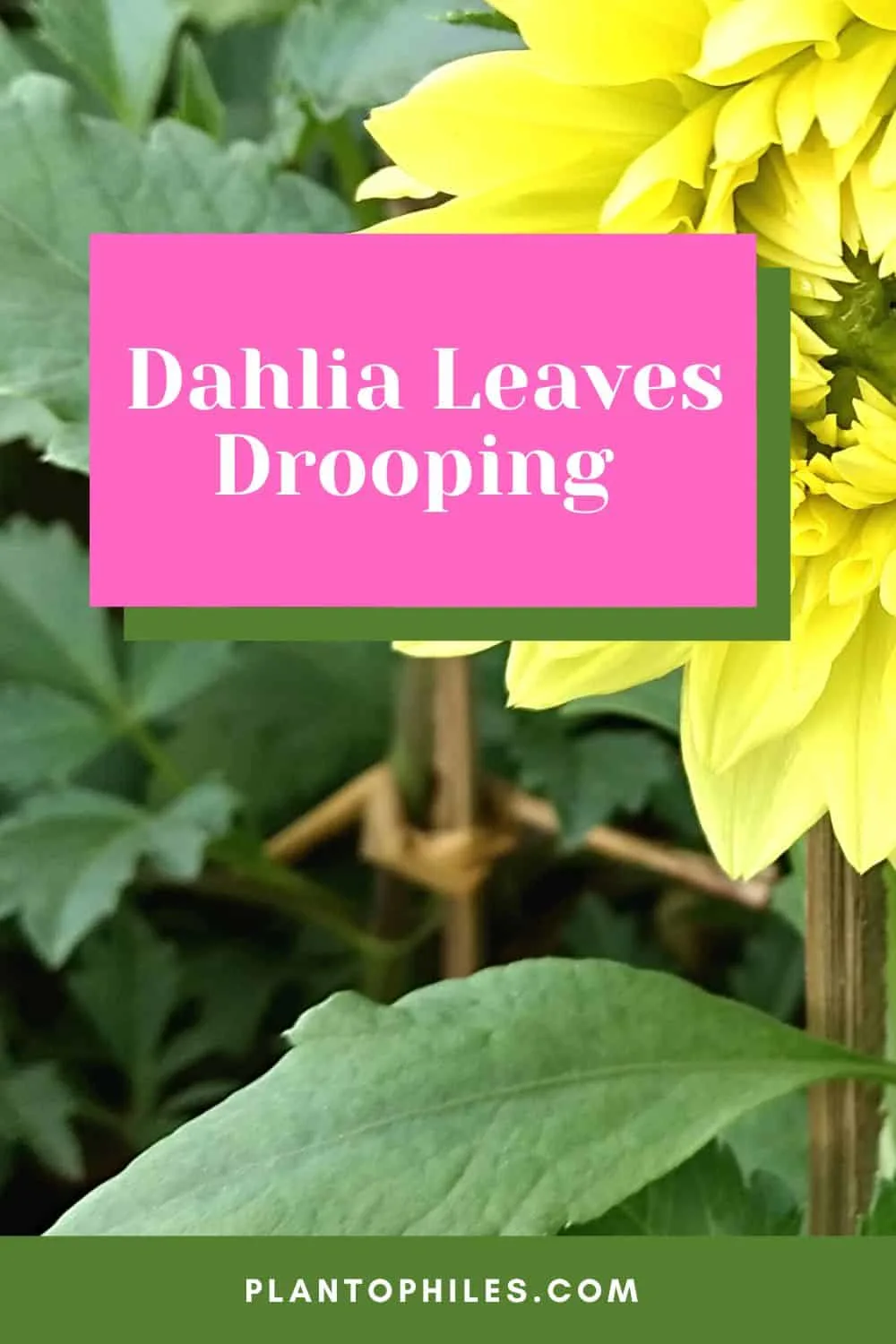
1. Dahlia leaves drooping because of incorrect watering
Like animals, all plants need a certain amount of water to thrive, and dahlias are no different.
Give your dahlia too much water, and the plant will “drown” as its root suffers from that horrible condition called “root rot.”
On the other hand, give your dahlia too little water, and it will suffer from thirst.
a) Too Much Water for Dahlias
Waterlogged soil has the wrong pH to work with dahlia’s roots, so the poor plant cannot absorb enough nutrients or, surprisingly, enough water.
Poor nutrition means the plant lacks enough mineral resources to stay healthy.
Without enough water, in an ironic twist of fate, the plant bizarrely dies of thirst (almost the same as how a person in a drifting boat dies of thirst surrounded by water!)
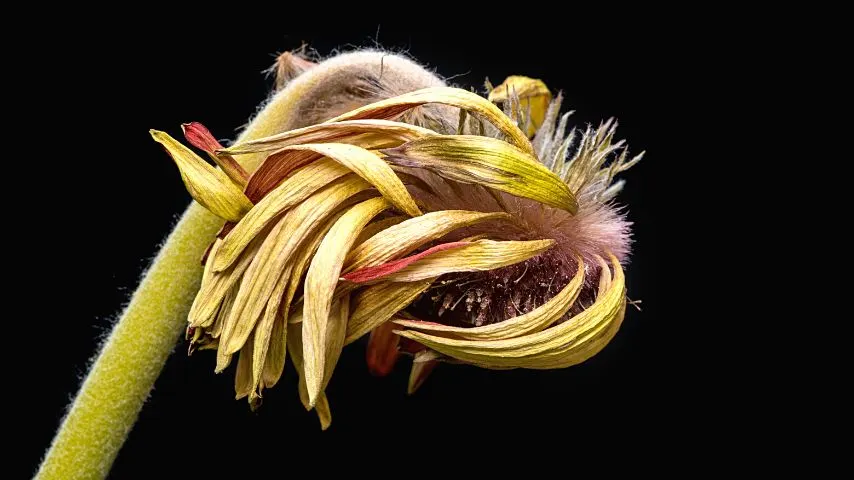
b) Too Little Water for Dahlias
Dahlia’s leaves sag in too-dry conditions because the plant cleverly redirects water away from its leaves to its stem in a desperate attempt to save itself.
If dahlia’s leaves die, but the stalk remains strong and able, then there is a chance for the plant to recover. However, if the plant’s stem dies, it is game over.
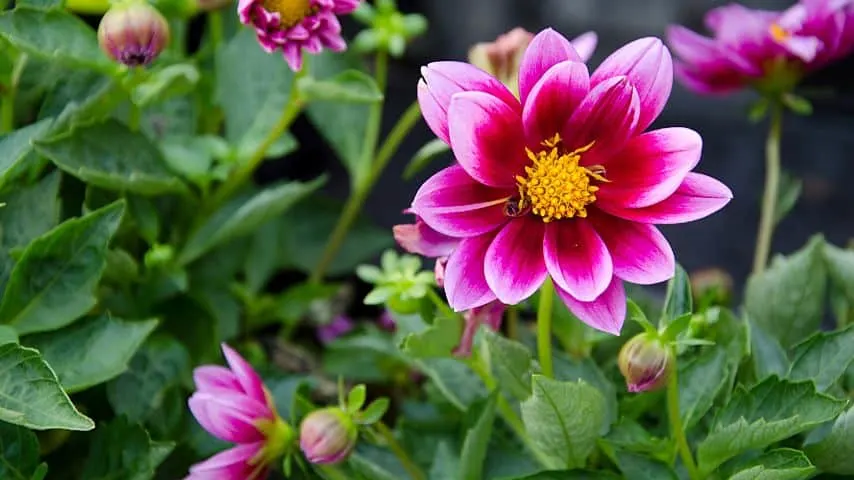
When dealing with dahlias, it is a good idea to remember that they are tropical plants, and as with most tropical plants, they expect good moisture in the soil.
I emphasize “in the soil” because dahlias don’t respond well to water on their leaves like many other tropical plants.
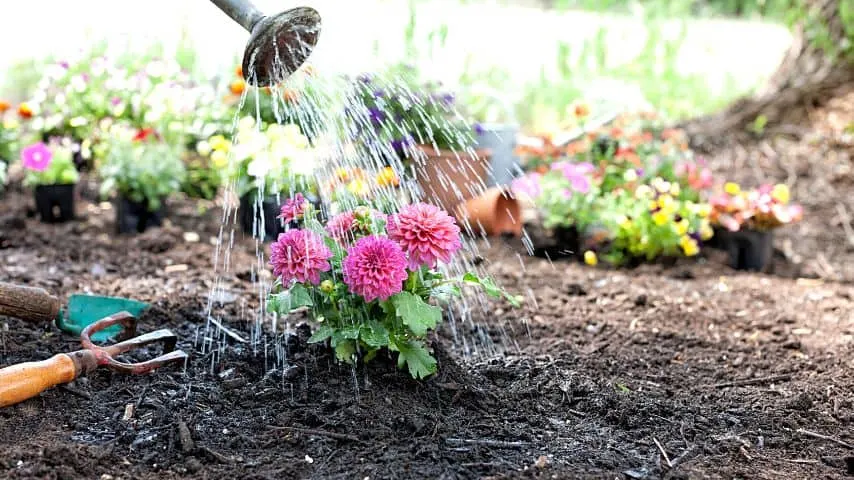
In their natural surroundings, dahlias grow in leafy, sheltered, tropical conditions where they avoid direct sunlight and direct rain, a fact which gives you a great hint at how best to grow them: hide dahlia from bright sunlight and do not water dahlia leaves but provide moisture to the soil.
2. Too much sunlight leads to leaf drooping in dahlia plants
Not unlike fair-skinned humans, dahlias “burn” easily in harsh, direct sunlight.
However, they don’t show sun damage by turning bright red and flaking. In dahlias, sunlight damage reveals itself in drooping leaves that typically have a yellow or brownish tinge.

To help give your dahlias the best chance to handle the sunlight in your locale, try to figure out where the plants will get soft morning sun, yet even at the height of summer, find adequate protection from the harsh noonday and afternoon sunlight.
The way to achieve this is by carefully placing the plants where shade comes into play at the right time.
This suggests a hard, standing object that doesn’t change shape over time, which excludes using trees, especially young ones, as the shade such trees provide might eventually become too much.
Then the poor dahlias would suffer from not getting enough sunlight.
Test dahlia’s soil with your eyes or a finger from time to time when the weather is sunny and hot to ensure its earth is pleasantly damp (but do not let it get waterlogged).
3) Over- and Underfertilization leads to drooping dahlias
Too much or too little fertilizer in the soil is terrible for dahlia, the plant will not grow properly.
Bad soil from too few nutrients will make dahlia brown, and its stem, branches, and leaves wither and wilt.
So, even though you will notice dahlia leaves drooping, you will be able to tell that the problem is insufficient nutrients because everything on the whole plant will go limp as well.
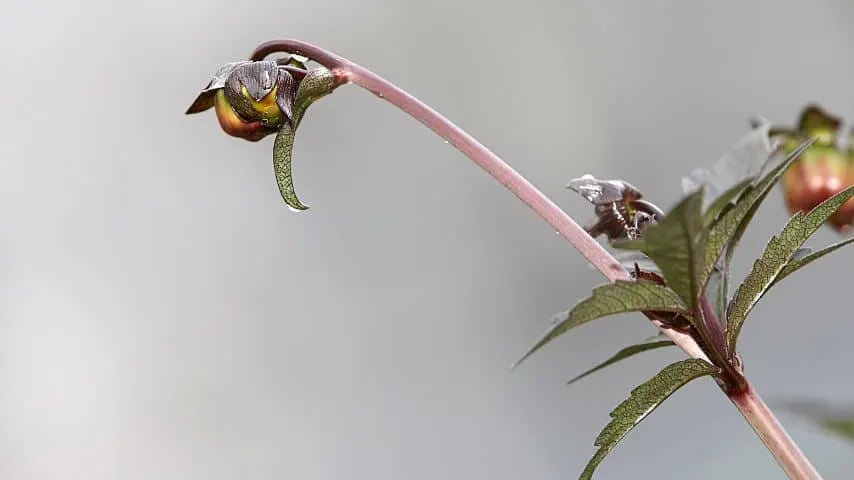
On the other hand, lousy soil from too many nutrients will lead to drooping leaves at first, leaving the plant’s stem and branches unaffected.
This is because overfed soil has the wrong pH to allow dahlia to control its water intake. Giving it excess food stops dahlia from taking too much or too little water from the soil.
Use a pH soil detector to test the soil’s pH, and ensure that for your dahlias, the pH level is between 6 and 6.5, which is what these plants like best.
If your soil is out of whack, use a 5:10:10 ratio of Nitrogen-Phosphorus-Potassium fertilizer to fix the problem. (I find organic fertilizers always work best for me.)
4) Fungal and Pest Attacks on Dahlia plants
Root-knot worms, aphids, and mites pose a constant problem for dahlia owners, causing their plants’ leaves to droop.
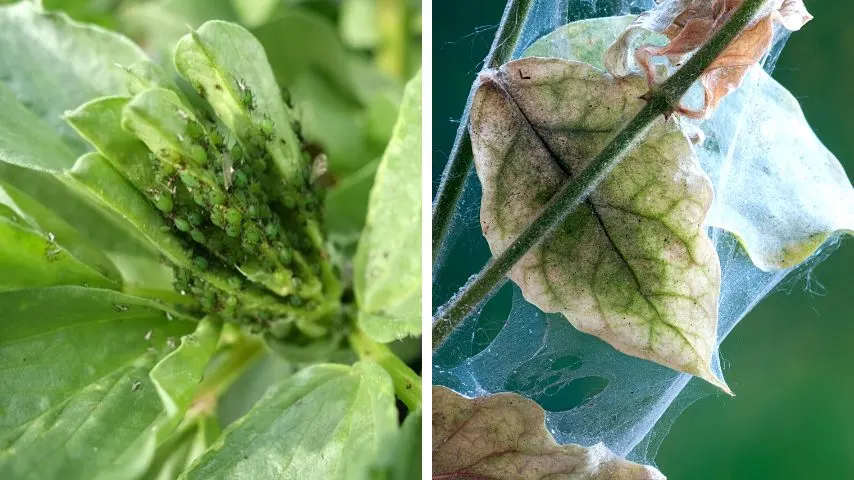
Fungi such as fungi Pythium and Rhizoctonia are another frequent challenge.
Whether pest or fungus, the solution to the problem I prefer and recommend is using a curative spray. However, the fungus “Verticillium” is quite nasty and will not respond to any medicine or spray.
Unfortunately, if a dahlia gets this fungus, you can try to save it by cutting away affected parts, but realistically, you might just have to remove the plant to protect your garden.
Read about why dahlia leaves are curling here.
Frequently Asked Questions about Dahlia Leaves Drooping
What’s the best watering frequency for my dahlias?
Dahlias thrive best when they get a constant supply of water, and the easiest way to give them that steady supply is through drip irrigation. Alternatively, give your dahlias plenty of water twice a week, but ensure that their soil drains well, so that root rot doesn’t set in.
How do overwatered dahlias look like?
The first to appear and the most telling sign that you’re overwatering your dahlias is that the tips of their leaves turn brown. Another sign is pale, wartlike blisters appearing all over the plant. A final sign that your dahlia is overwatered is that its leaves turn yellow, soft, and floppy.
Conclusion Dahlia Leaves Drooping
Dahlia leaves droop for the following reasons:
- Incorrect watering
- Too much sunlight
- Over- and under-fertilization
- Fungi and Pest attacks

Daniel has been a plant enthusiast for over 20 years. He owns hundreds of houseplants and prepares for the chili growing seasons yearly with great anticipation. His favorite plants are plant species in the Araceae family, such as Monstera, Philodendron, and Anthurium. He also loves gardening and is growing hot peppers, tomatoes, and many more vegetables.

